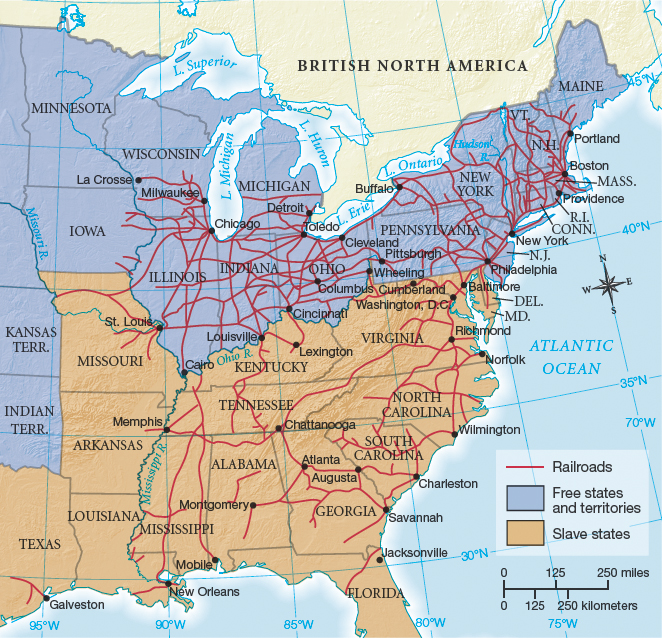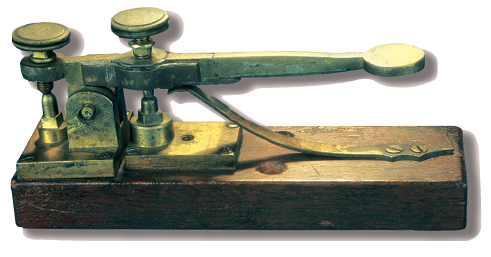Railroads: Breaking the Bonds of Nature.
Printed Page 308 Chapter Chronology
Railroads: Breaking the Bonds of Nature. Railroads captured Americans' imagination because they seemed to break the bonds of nature. (See "Visualizing History.") When canals and rivers froze in winter or became impassable during summer droughts, trains steamed ahead, averaging more than twenty miles an hour during the 1850s. Above all, railroads gave cities not blessed with canals or navigable rivers a way to compete for rural trade.
In 1850, trains steamed along 9,000 miles of track, almost two-thirds of it in New England and the Middle Atlantic states. By 1860, several railroads spanned the Mississippi River, connecting frontier farmers to the nation's 30,000 miles of track, approximately as much as in all of the rest of the world combined (Map 12.1).
Map Activity


In addition to speeding transportation, railroads propelled the growth of other industries, such as iron and communications. Iron production grew five times faster than the population during the decades up to 1860, in part to meet railroads' demand. Railroads also stimulated the fledgling telegraph industry. In 1844, Samuel F. B. Morse demonstrated the potential of his telegraph by transmitting an electronic message between Washington, D.C., and Baltimore. By 1861, more than fifty thousand miles of telegraph wire stretched across the continent to the Pacific Ocean, often alongside railroad tracks, accelerating communications of all sorts.
In contrast to the government ownership of railroads common in other industrial nations, private corporations built and owned almost all American railroads. But the railroads received massive government aid, especially federal land grants. Up to 1850, the federal government had granted a total of seven million acres of federal land to various turnpike, highway, and canal projects. In 1850, Congress approved a precedent-setting grant to railroads of six square miles of federal land for each mile of track laid. By 1860, Congress had granted railroads more than twenty million acres of federal land, thereby underwriting construction costs and promoting the expansion of the rail network, the settlement of federal land, and the integration of the domestic market.
The railroad boom of the 1850s signaled the growing industrial might of the American economy. Like other industries, railroads succeeded because they served both farms and cities. But transportation was not revolutionized overnight. Most Americans in 1860 were still far more familiar with horses than with locomotives.
The economy of the 1840s and 1850s linked an expanding, westward-moving population in farms and cities with muscles, animals, machines, steam, and railroads. Abraham Lincoln planted corn and split fence rails as a young man before he moved to Springfield, Illinois, and became a successful attorney who defended, among others, railroad corporations. His mobility — westward, from farm to city, from manual to mental labor, and upward — illustrated the direction of economic change and the opportunities that beckoned enterprising individuals.